——2019 Global Immersion in Spanish
Written by:LI Jingyi, JUN Jingjing
Picture by:XIE Chao, and etc.
Between January 12 and 20, 2019, 40 Tsinghua SEM MBA students of 2017, led by Professor QIAN Xiaojun, MA Jia, Director of MBA Programs, and ZHANG Yao, went to Barcelona and La Coruña to start their overseas module Global Immersion in Spain: Fast Fashion and Sustainability.
The overseas module is composed of four parts: visit to Stradivarius, classes at ESADE business school, visit to Inditex headquarters, and business model presentations.
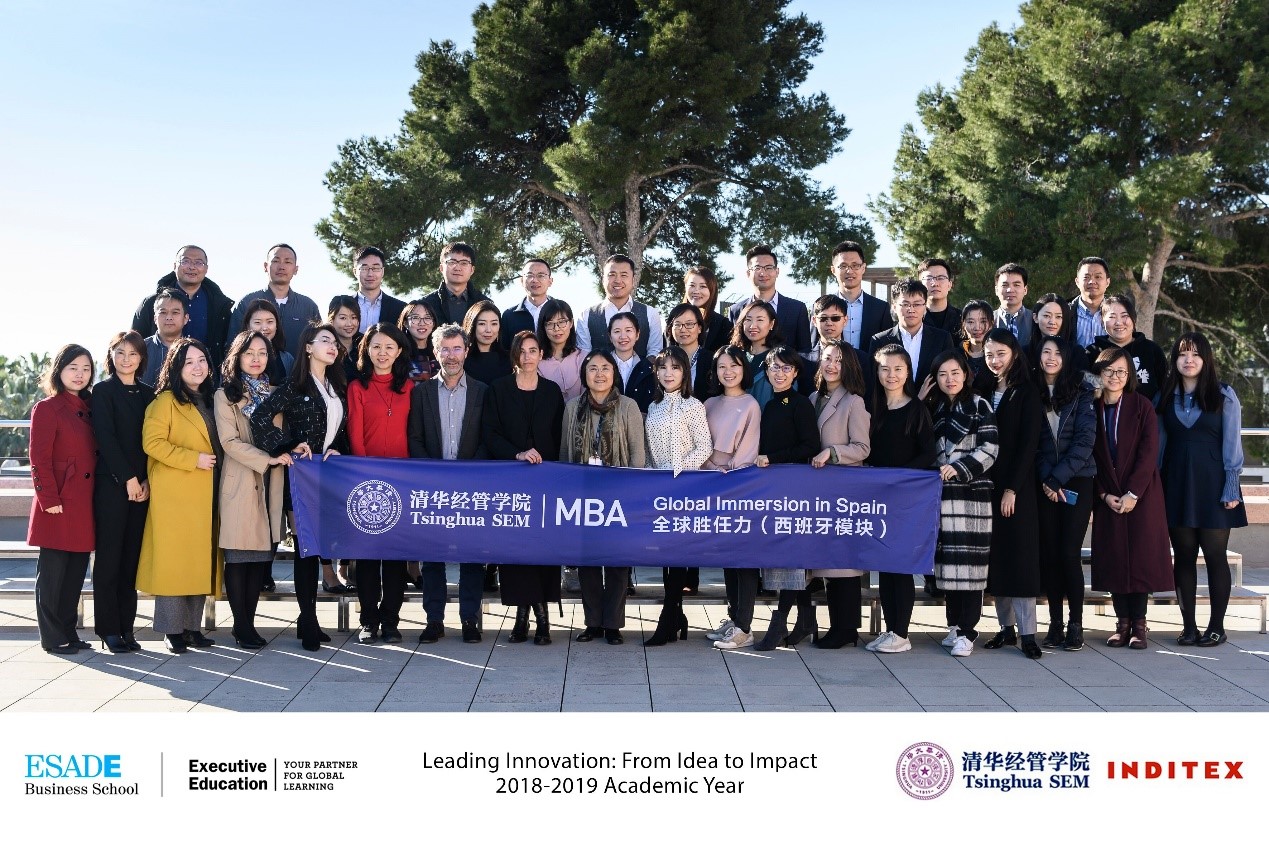
Group Photo
I. Ⅰn Inditex——A Close Study of Sustainable Management
With boundless joy and yearning, students adopt brand new perspective and experiential learning method for an in-depth study of the fashion giant Inditex Group and its sub-brands ZARA and Stradivarius, exploring the innovative path of sustainable management for Inditex in future.
Visit to Stradivarius
Jesus Echevarria, the Chief Communication Officer of Inditex Group, received us and opened for us the door to Inditex. He explained about the corporate strategy of the most famous fashion giant in Europe and the in-depth understanding of sustainability. He also emphasized on the general concept of “right to wear”. All these lead to the theme of this Spanish field trip——sustainability.
In the following visit, we have a further understanding of the division of labor and coordination mechanism of each procedure. Stradivarius has made its best to use the most environment-friendly method to reduce pollution and waste in production, operation and sale. Stradivarius also emphasizes on protecting and improving workers’ rights and interests, and undertakes its responsibility in protecting environment and biological diversity.
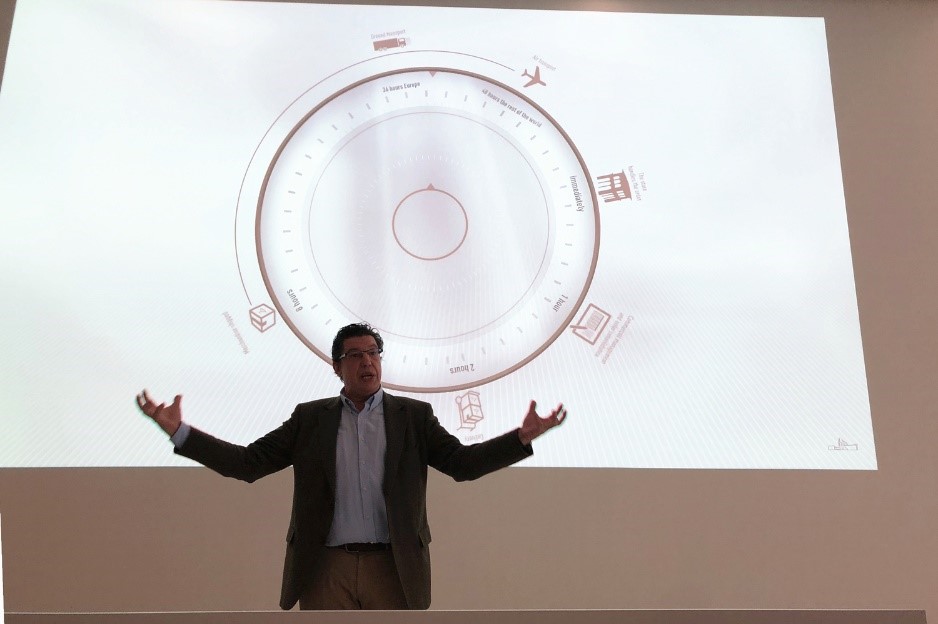
Jesus Echevarria, the Chief Communication Officer of Inditex Group
Stradivarius’ sense of social responsibility can be fully felt from the above aspects. There is still a long way to go for achieving sustainable development of fashion industry, as we have to implement the ideas of sustainability while meeting customers’ demand for fast fashion, in order to realize environmental protection and profitability at the same time. Through exchanges with Inditex, we look forward to finding some new ways to promote the sustainable development of global fashion industry.
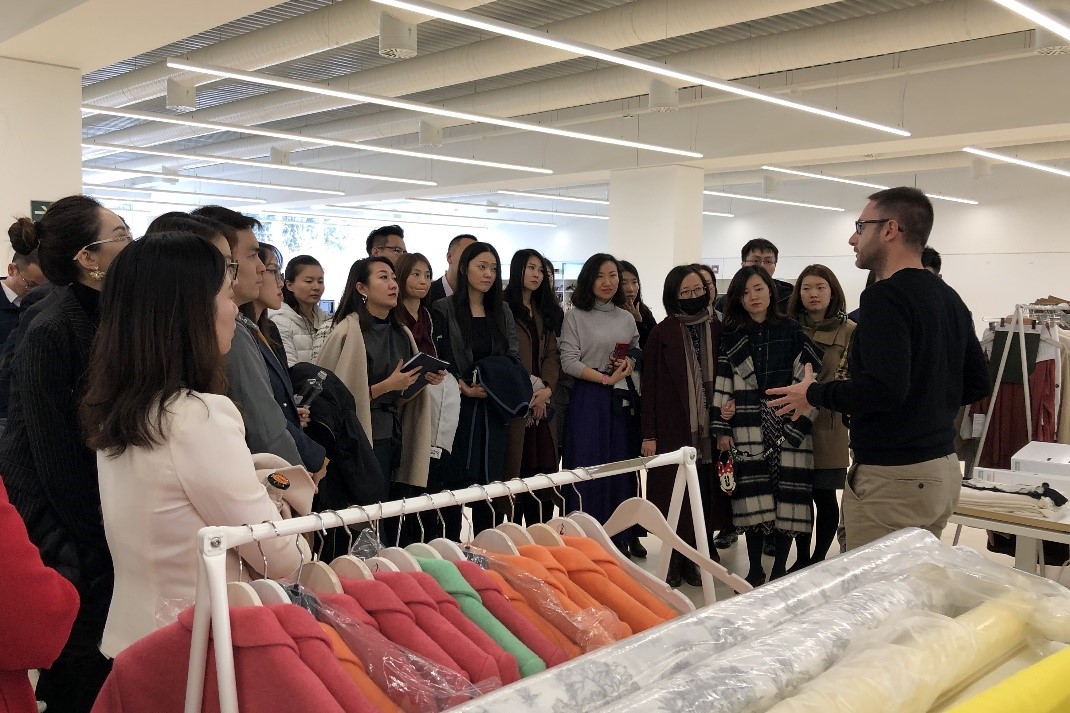
Exchanges with the Work Staff at Stradivarius
Crossing Iberian Peninsula
After the abundant classes in Barcelona, we flied to La Coruña, the westernmost of Iberian Peninsula and also where the headquarters of Inditex is located.
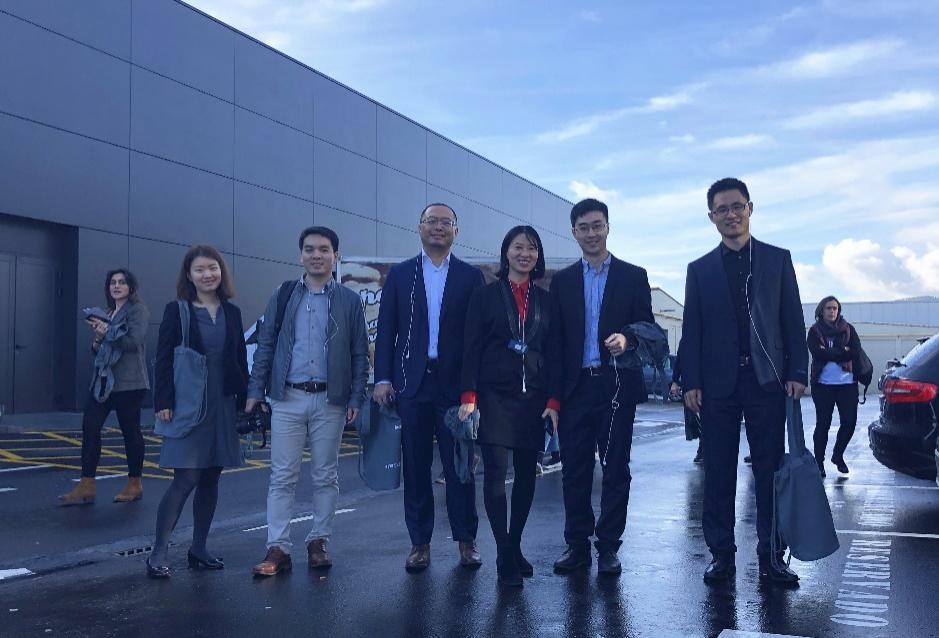
Arrival at Inditex Headquarters
We visited the design center, manufacture center, data center, logistics center and innovation center all the way. We were shocked by the modernized process management we saw: the supply chain system adopts automation process from the original cloth cutting to the final delivery. And we admired the high efficiency of ZARA as once its stores submit orders ZARA could deliver the goods within 48 hours across the globe and introduce new products twice a week. With so powerful management and operation skills, it possesses outstanding cost control capability, sound financial performance, and robust development potential.

Automated Logistics System
The sustainable development department is situated inside Inditex’s innovation center. The department currently focuses on researching and developing new materials for sustainable development. For example, the “Take Back Program” through recollecting old clothes from community, reprocessing them into new environment-friendly materials, manufacturing clothes with the materials and donating the clothes to charity agencies, gives the non-usable clothes second life to finally achieve the two-way balance between natural environment and social welfare.
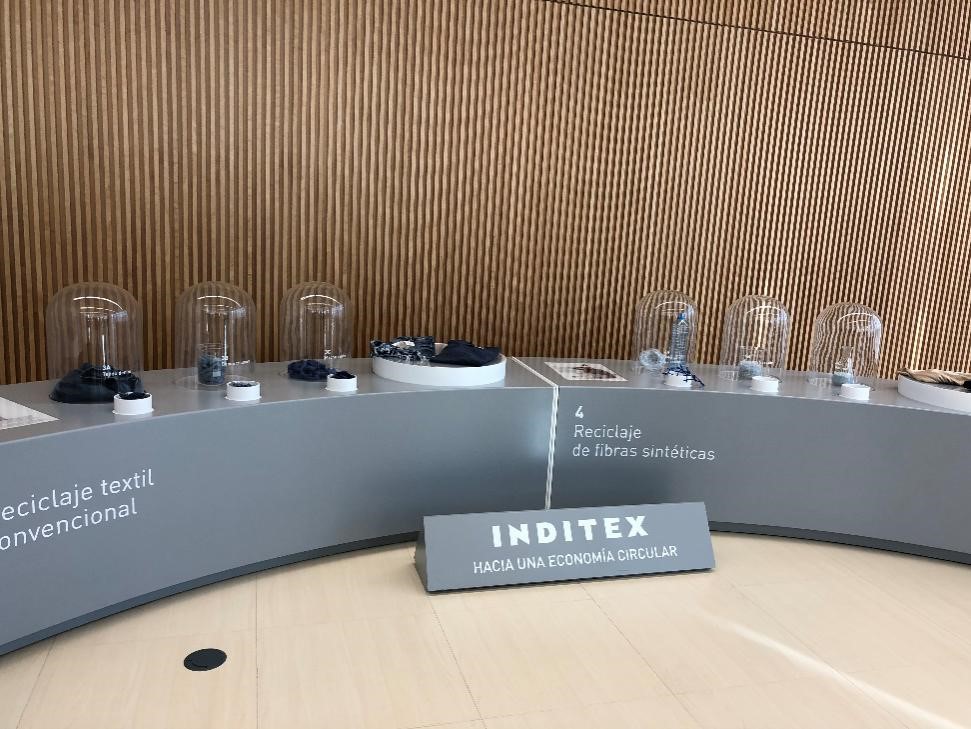
Display the Recycling Process of Cloth
After the visit to the headquarters, we also went to For&From, one of Zara’s characteristic programs of sustainable management. The idea of the overall design is to facilitate disabled people to finish shopping smoothly, for example, to lower the shelf for goods on purpose, to display goods separately according to their sizes, and to add Braille introductions to the label of goods, and etc. For&From also hires disabled people as work staff. On the day of our visit, the staff who received us warmly is a person with hearing impairment. The profits of this store are donated 100% to NGOs and charity affairs, which fully reflects the corporate social responsibility.
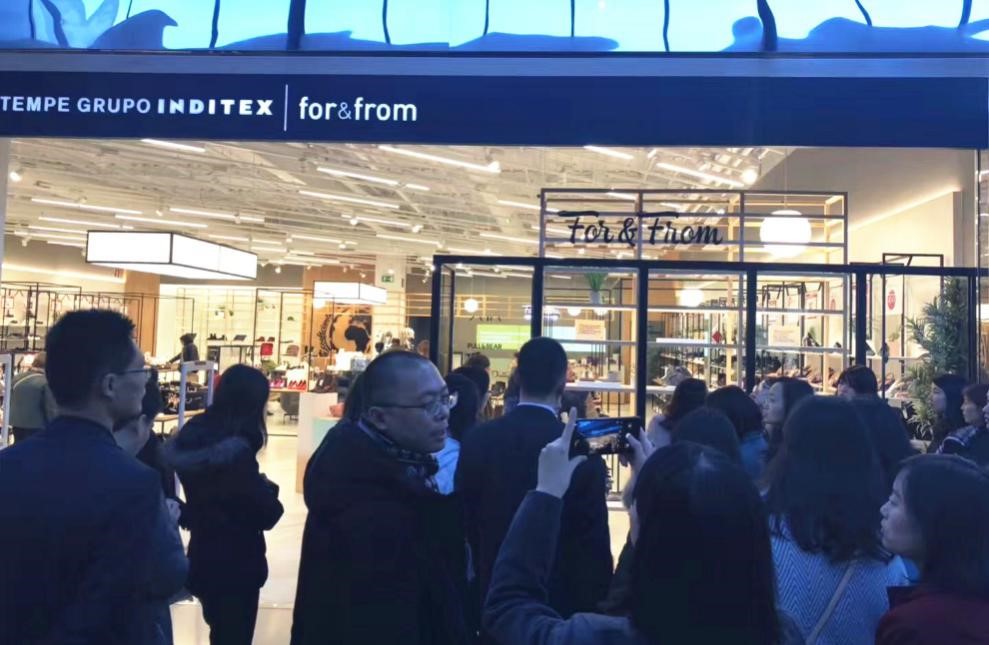
Visit to For&From
II. Study at ESADE——A Clash of Innovation Business Models
ESADE Business School is one of the top three business schools in Spain, and also one of the best business schools in Europe. Professors Alfred Vernis and Elena Salcedo, focused on the three topics in a progressive manner: “Sustainability challenges in the Fashion Industry” “Experimenting the Circular Economy at the Fashion Industry” and “From Shared Value to Business Models for Sustainability”. Teaching by a combination of giving lectures and group practice, they enable us to know the overall picture of industry chain for clothing industry, the influence of circular economy on clothing industry and the strategic significance of innovative business models for corporate sustainable development.
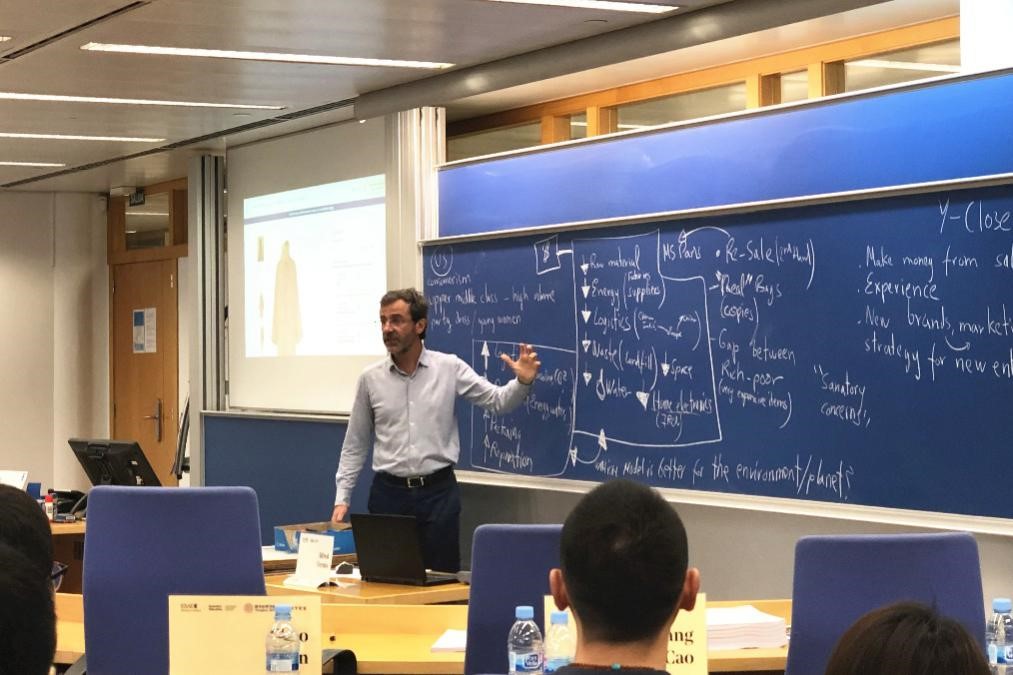
Professor Alfred Vernis
The Sense of Social Responsibility is the Cornerstone of Corporate Long-lasting Development
The corporate social responsibility is not a face-saving project, however, it determines to some extent whether the company could achieve long-term sustainable development. A company without the sense of social responsibility would easily fall into the trap of profit pursuing and therefore sacrifice long-term benefits for short-term ones. Zara has made a lot of attempts and investments in circular economy, which could not be testified from the perspective of business profits at first. The Inditex Group not only sets an example to global clothing enterprises, but also lays a solid foundation for the sustainable development of Zara.
The Innovation of Business Models Originates from Top-Level Design
The teaching at European and American business schools emphasize very much on discussion and practice by groups. At this Spanish Module class, through finishing group tasks over and over again, we fully understand the challenges of environment sustainable development faced by the whole manufacturing industry chain, as well as the opportunities.
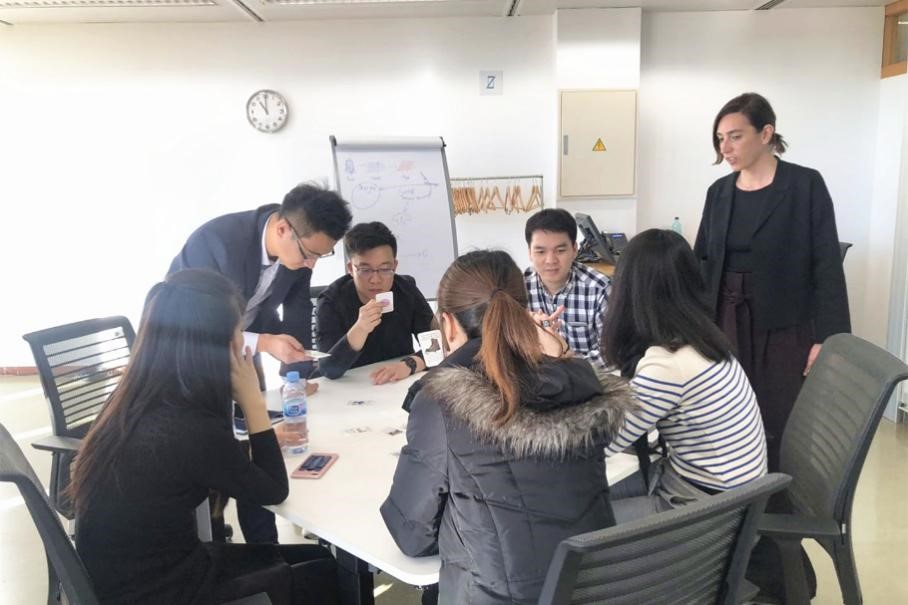
Professor Elena Salcedo Led Group Discussion
At the lecture of “From Shared Value to Business Models for Sustainability”, Professor Alfred Vernis points out that the innovation of business models originates from the top-level design, which requires an in-depth understanding of the industry, a precise grasp of the future trend and reasonable imagination. How to promote a deep integration between internet, big data, AI and the real economy from the perspective of top-level design, with the aim to release market demand? It is a question not only for Inditex, but also for every company that tries to expand the global market.
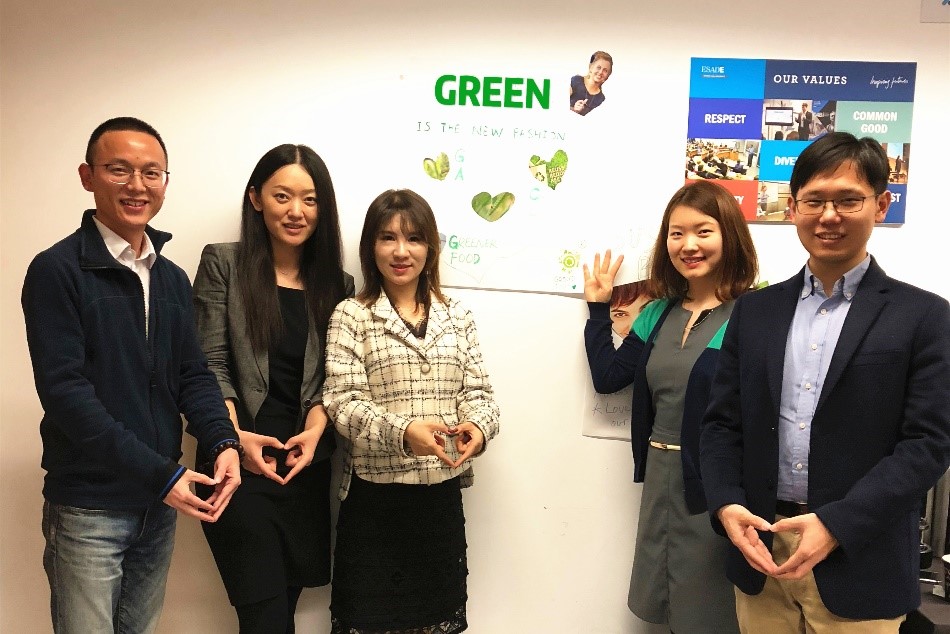
Group Photo with the Group Discussion Result
To be the Promoter for Corporate Transformation
Discussion on innovative business models continues even after class, and finally becomes part of our solutions. Before we start this journey, Inditex’s Sustainable Development Department raised for us the challenge to explore “New Business Models for the Fashion Industry in China”. Through investigation and research at domestic stores and user surveys, each group has an initial idea of its own business model, which is further improved after days of field trip and exchanges with practitioners.
On the last day of our trip, we displayed 8 distinctive new business models to Jesus Echevarria, Inditex’s Chief Communication Officer, Félix Poza, Inditex’s Chief Sustainability Officer, and nearly 10 chiefs of the innovation department. Professor Vernis and Inditex highly commended students’ performance. They are impressed by our understanding of fashion industry, research and analysis of China’s market and fluent spoken English. Inditex’s chiefs kept raising questions they are interested in about our display, and they are willing to continue the discussion on making some of the models become reality someday.
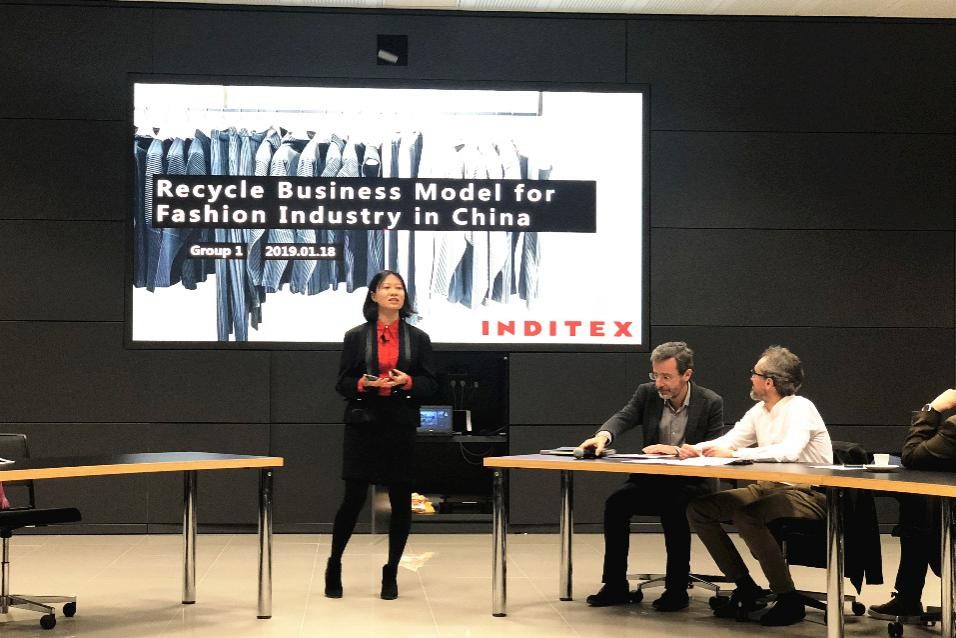
Presentation on New Business Models
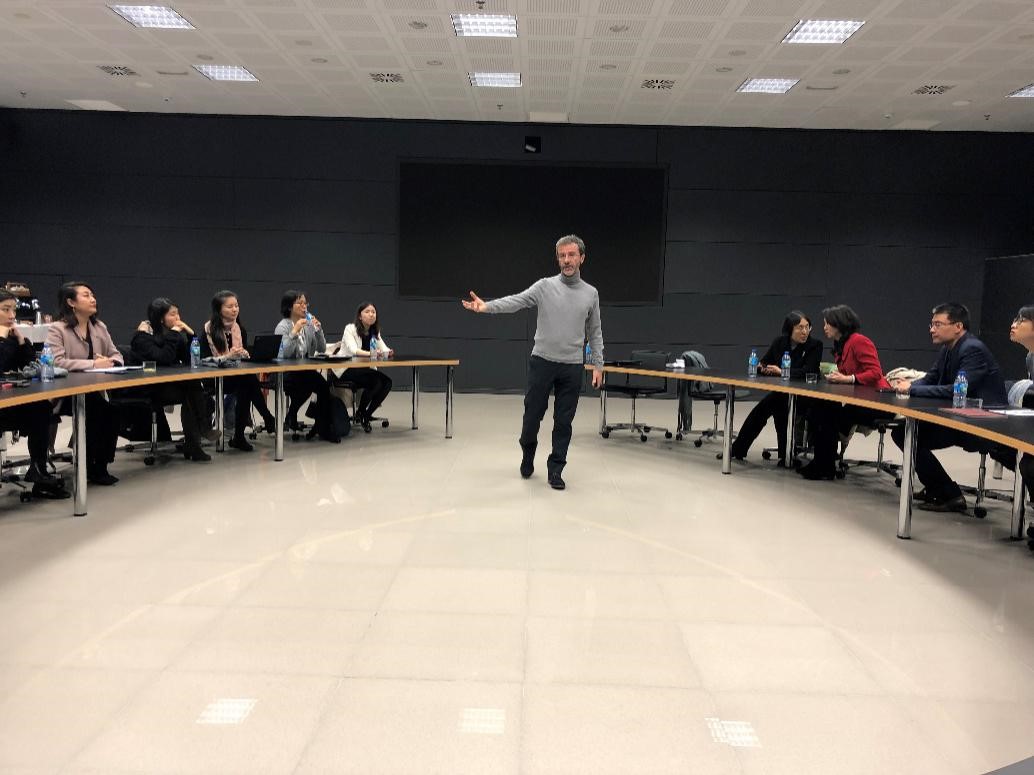
Comments by Professor Alfred Vernis

Comments by Professor QIAN Xiaojun
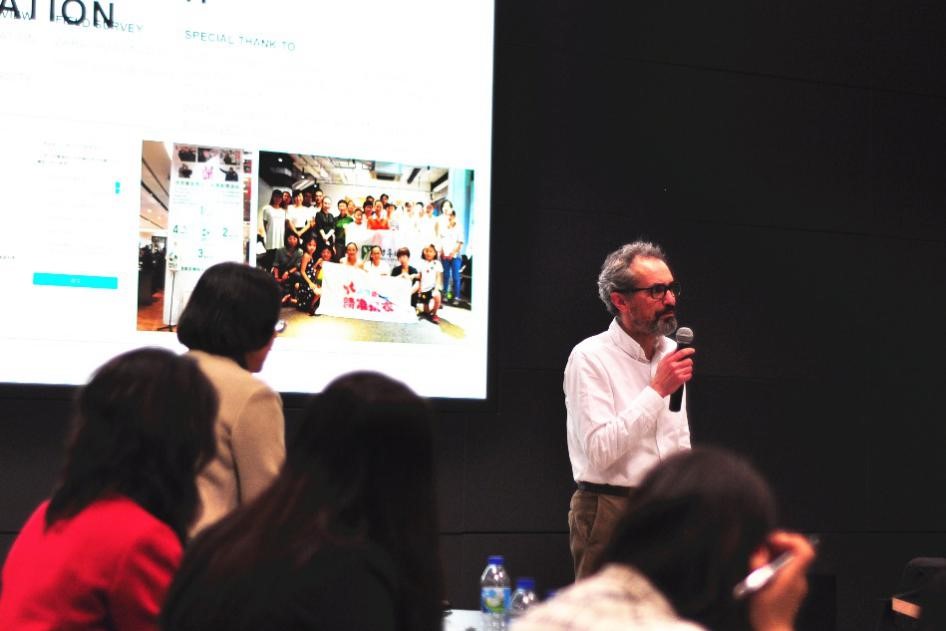
Summarized by Félix Poza, Inditex’s Chief Sustainability Officer
III. Management Wisdom——A Dialogue with the Best-Performing CEO in the world
During the visit to Inditex headquarters, Pablo Isla, Inditex’s President and CEO, came to have a dialogue with students on the site.

Pablo Isla, Inditex’s President and CEO
Follow the Rules of Nature and Parallel with Heaven & Earth——A Manager of Extreme Wisdom
Pablo Isla was elected as the best-performing CEO in the world by Harvard Business Review in 2017 and 2018. The reason for his topping the list lies in the idea he advocates for sustainable development and circular economy, which has been leading the trend of fashion industry. In the dialogue with Isla, students had an in-depth discussion with him on issues like the distribution mechanism for internal equity, financial indicators assessment, and how to view China-US relations in the process of globalization. He impressed us by emphasizing that “profits are not the single objective for corporate management, however, the balance between corporate development and natural environment as well as social benefits deserves more of our attention.” Every decision made by Inditex is closely related with sustainable development, and the sustainability includes product quality, place of production, work environment for garment makers and the recyclability of products. Inditex has made a promise that by 2020 all stores are going to be eco-efficient, meaning that those stores will reduce consumption of water by 40% and energy by 20%, and that all the fabric used will obtain environmental certification. Now 86% of the stores have achieved this target.
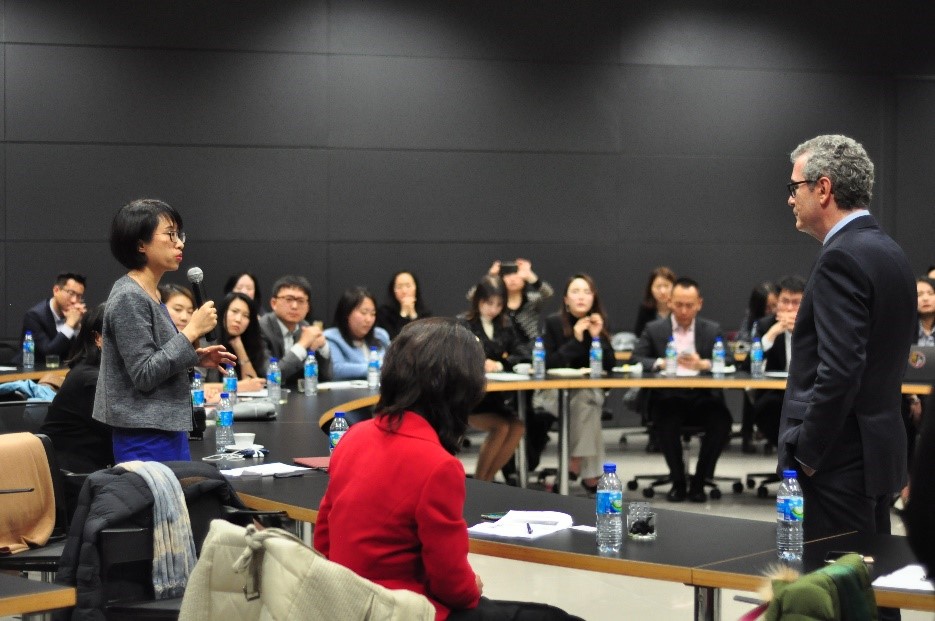
A Dialogue with the best-performing CEO in the world
The More You Know, The Better You Do——Deeply-rooted Idea of Sustainability
Isla integrates the idea of sustainability into every aspect of its relations with employees, users and society. Talking about Inditex’s development, he believes there are three major pillars. The first is to motivate the potential of talents, to adopt flat organization structure, to emphasize on team work, to cultivate innovation and to increase employees’ passion and creativity——these are the core for survival of enterprises and also important ways to achieve sustainable development for enterprises and employees; the second is to focus on products, and therefore Inditex always considers customer demand as the key, values the design for every product, and to meet customer demand efficiently by using global supply chain, with the aim to achieve the sustainable development for enterprises and customers; the third is to put emphasis on environmental protection that Inditex not only takes the lead in adopting advanced environmental technology but also sets up sustainable development department and cooperates with well-known universities to research, develop and tailor-made environment-friendly materials, in order to achieve the sustainable development for enterprises and social benefits.
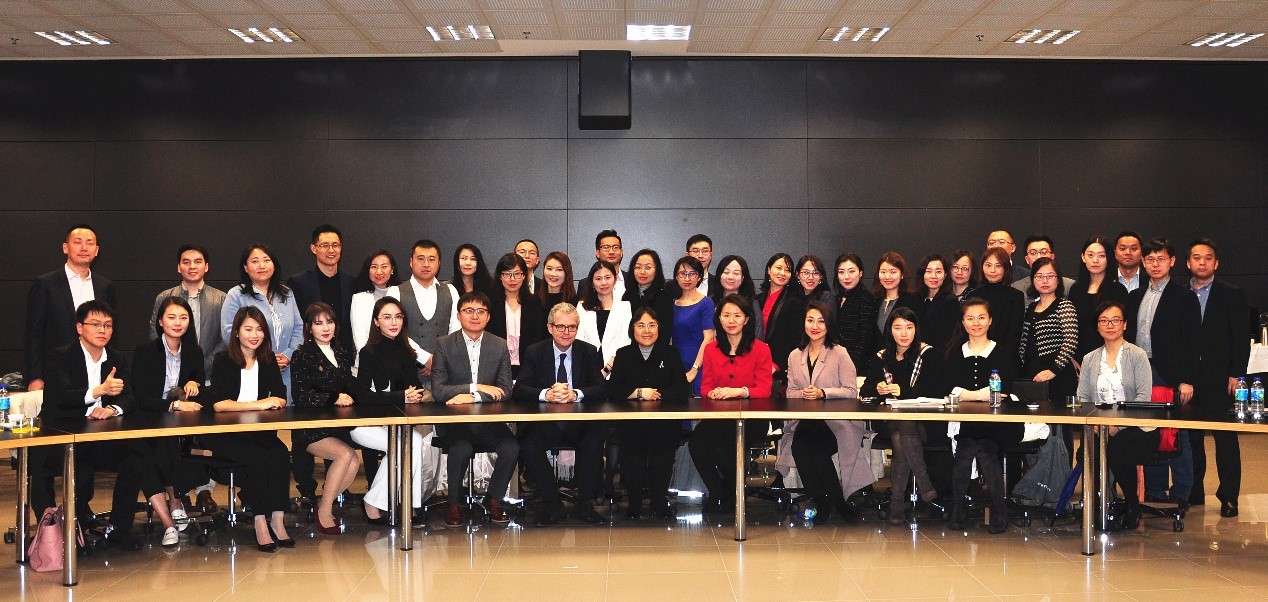
Group Photo
Throughout a life so short, the enjoyable time is always unforgettable. It could hardly be forgotten the happiness to explore Sagrada Familia together, the “torment” to discuss new business model together, and also the cherished time with classmates by side in a foreign country. The overseas module approaches the end soon, however, we will never forget the selfless devotion of every teacher, the hospitality of Inditex, the days and nights of studying together, the clashes of different ideas between us, and most important of all, the affection between us that will last ever longer than the beautiful landscape of the Iberian Peninsula.